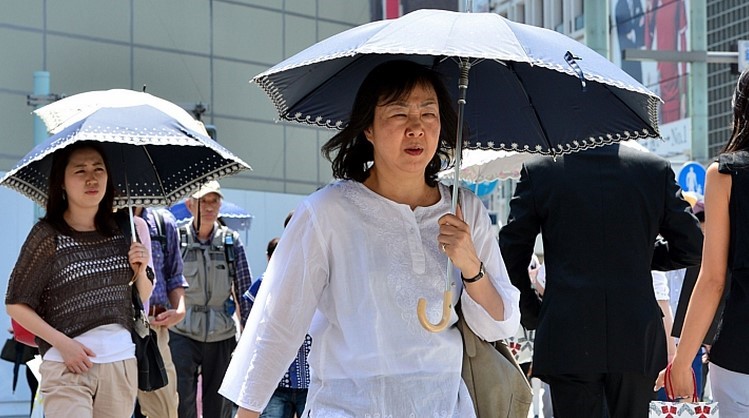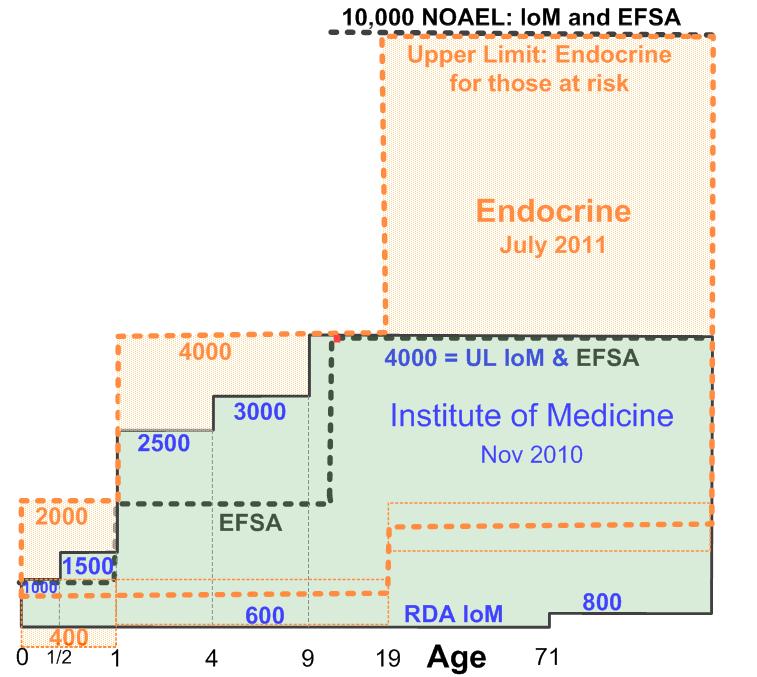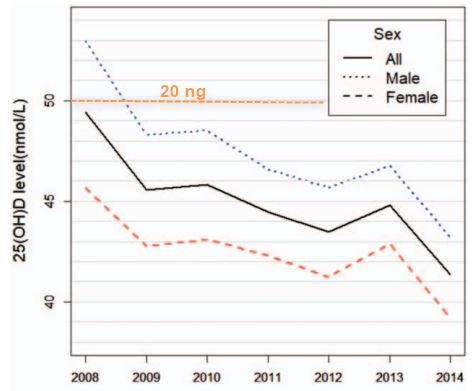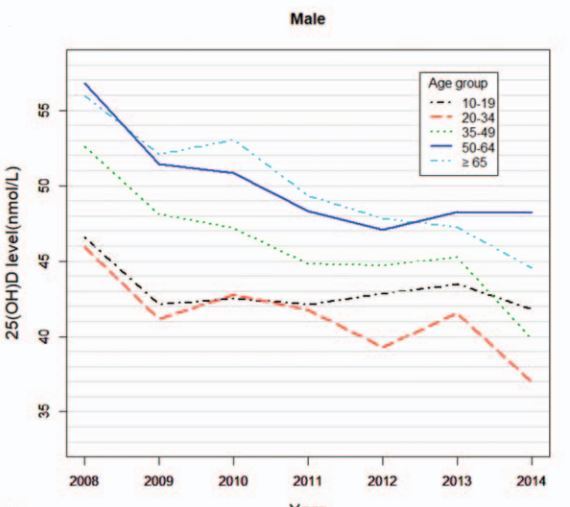Vitamin D levels continue to fall in Korea
Vitamin D status in South Korean population: Seven-year trend from the KNHANES
Medicine: June 2018 - Volume 97 - Issue 26 - p e11032, doi: 10.1097/MD.0000000000011032
Park, Ju-Hyun, PhDa; Hong, In Young, MSa; Chung, Jae Woo, MD, PhDb; Choi, Han Seok, MD, PhDc,
 Korea has the distinction of having the lowest DRI on the planet: 200 IU* Vitamin D Recommendations around the world - IU and ng*
Korea has the distinction of having the lowest DRI on the planet: 200 IU* Vitamin D Recommendations around the world - IU and ng*  Vitamin D levels are rising, not falling, in some other places* Vitamin D levels at Mayo Clinic increased over a decade – June 2018* Vitamin D levels in Iran increasing somewhat since 2001 – Dec 2017* Vitamin D in US children: those having more than 40 ng increased 60 percent (2001-2010) - Dec 2016* Vitamin D levels increasing in US elderly, whites, and women – CDC Nov 2016* Huge increase in Vitamin D supplementation in the US military (2005-13) – Oct 2016
Vitamin D levels are rising, not falling, in some other places* Vitamin D levels at Mayo Clinic increased over a decade – June 2018* Vitamin D levels in Iran increasing somewhat since 2001 – Dec 2017* Vitamin D in US children: those having more than 40 ng increased 60 percent (2001-2010) - Dec 2016* Vitamin D levels increasing in US elderly, whites, and women – CDC Nov 2016* Huge increase in Vitamin D supplementation in the US military (2005-13) – Oct 2016📄 Download the PDF from Vitamin D Life

VS age - for males

Vitamin D deficiency has become one of the most prevalent health problems in modern society. However, there has been no study that has reported the trend of vitamin D status in Asia. We performed an observational study to investigate the trend of vitamin D status in South Korea based on a representative national database acquired from the Korea National Health and Nutrition Examination Surveys (KNHANES) conducted from 2008 to 2014. A total of 39,759 patients were included in the final analyses. Serum 25-hydroxyvitamin D (25 (OH)D) levels were measured by radioimmunoassay. The overall mean serum level of 25 (OH)D was 45.7 nmol/L in males and 40.9 nmol/L in females in KNHANES 2008 to 2014. There was a significant trend toward lower serum 25 (OH)D levels from 2008 to 2014 in males by −1.2 (95% confidence interval [CI] −1.5 to −0.9) nmol/L per year and in female by −0.7 (95% CI −0.9 to −0.4) nmol/L per year. The overall mean serum level of 25 (OH)D in 2008 was 53.0 nmol/L in males and 45.7 nmol/L in females. It decreased to 43.2 nmol/L in males and 39.2 nmol/L in females in 2014. Vitamin D deficiency, defined as the serum 25 (OH)D level of <50 nmol/L, was found in 65.7% of males and 76.7% of females in overall population. A significant increasing trend of vitamin D deficiency was also observed. The prevalence of vitamin D deficiency in 2008 was 51.8% in males and 68.2% in females, but rose to 75.2% and 82.5%, respectively, in 2014. The present study demonstrated that vitamin D status in South Koreans is still deteriorating. More extensive and proactive measures are needed to improve vitamin D status in South Korea.
